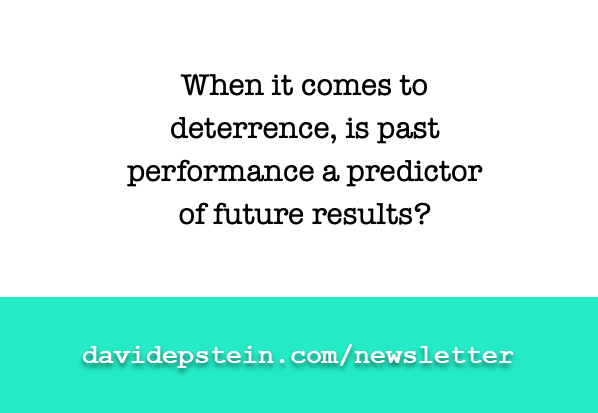April 12, 2021
Alex Hutchinson, a.k.a. @sweatscience, is basically the taller Canadian version of me: we’re close in age, and he was also a national level middle-distance runner who transitioned from science into writing. Except, unlike me, he actually finished his Ph.D. program (in physics), and made his national team.
Far from making him my annoying professional doppelgänger, it has made him one of my favorite writers. His bestselling book, Endure: Mind, Body, and the Curiously Elastic Limits of Human Performance, is, quite frankly, a book I wanted to write. I’m glad Alex did, though, because I can’t imagine anyone having done it better.
The paperback is just out, with a new afterword, so I invited Alex to chat about human limits and the mind-body connection.
DE: How did you decide to take on this topic?
AH: The initial spark was some research by a South African scientist named Tim Noakes, who proposed that we have a “central governor” in our brains that slams on the brakes before we reach our true physical limits. As a long-time runner, I was fascinated by the idea that it’s my brain, rather than my lungs or my legs, that holds me back. And as a journalist, of course, I’m a sucker for “Everyone always assumed X, but it’s actually Y” stories.
DE: Ok but you’re also clear on the fact that this doesn’t just mean “It’s all in your head,” in the sense that physiology doesn’t matter. My read of your work is that it’s more like a racecar, in that the machine definitely matters, but in focusing our research on the machine, we’ve often overlooked the driver — i.e. the brain.
AH: Exactly — it’s not all in your head, any more than it’s all in your muscles. It’s 100 percent both — kind of like the nature/nurture debate you tackled in The Sports Gene. The big mistake is thinking that you can understand the body without including the brain’s input, or vice versa. As a classic study from the early 1960s put it, “psychology is a special case of brain physiology.” (That’s the study where they tested maximum strength after scaring the crap out of subjects by sneaking up behind them and firing a starter’s pistol in their ear. Fear increased strength. But I digress!)
DE: Wait, please digress! Can you tell me a little bit more about that study, and whether I need to scare myself before working out?
AH: It was a wild one. They had subjects doing what were basically all-out biceps curls once per minute, and then tried all sorts of things to alter their strength: sudden yells, injections of adrenaline and amphetamine, and even hypnosis. Ultimately, they were trying to understand the stories we always hear about mothers lifting cars or performing other crazy feats to save their babies. It’s clear that triggering that fight-or-flight system really does unlock some extra strength. To actually lift a car, though, the key is apparently to find a car with an asymmetrical weight distribution, a stiff suspension, and an easy-to-grasp bumper. That’s the inside info I got from Tom Magee, better known as the WWF wrestler MegaMan, who used to lift cars as part of his strongman act.
DE: An overall sense I get from your book is that our brain acts as an integrator; it’s collecting data from inside our body, and from the environment (how hot and bright it is, things like that), and spitting out a sort of composite, which is how tired you feel — sometimes called your “rating of perceived exertion” in studies. And that RPE is very much not a function only of your physical limitations, but also of things like the conditions around you, and even how much you care about whatever you’re trying to do. Is that a reasonable understanding?
AH: Yeah, that’s a hugely important point. Your subjective sense of effort acts as a sort of “master switch” that determines whether you can keep going: if it feels too hard, you’ll slow down or stop. It’s almost tautological. That feeling is not arbitrary: if you speed up or lift a heavier weight or don’t eat enough, it will definitely feel harder. But it’s not entirely deterministic, either: the exact same workout, under identical conditions, might feel harder this week than it did last week because you’re under a lot of stress at work.
DE: That kind of reminds me of studies that find that college athletes get injured more around exam time….
AH: And wound healing is slower during exam time too! Try to disentangle the physiology and psychology in that one. But you had mentioned heat, which is a great example, because it’s both a perception and a physiological reality. There’s a great study where they put cyclists in a heat chamber and found that 90 degree heat slowed them down. No big surprise there, and there are entire physiology textbooks explaining why that happens. But when they rigged the thermometers so that the cyclists thought it was only 80 degrees, the heat didn’t slow them down anymore. Heat definitely has real effects, but part of the reason it slows us down is that we expect it to.
DE: You just reminded me of the study that gave some high level cyclists amphetamines, and others placebo, and had them cycle really hard in a hot lab environment. In normal circumstances, when your core temperature gets around 104 °F, your brain makes you slow down. And that’s what happened for the placebo group, but the cyclists who got methylphenidate (a.k.a. Ritalin) blew right through that barrier without knowing it. Amphetamines aren’t like steroids, they aren’t acting on your muscles, but they removed the brain’s inhibition from overheating, which gave those cyclists more endurance. Of course, it could also put them in danger of heatstroke. In the 1960s, one of the best riders in the Tour de France died after he took amphetamines and overheated. Just like in the study you mentioned, the brain’s response to heat was changed, in the first study by rigging thermometers, and in the second with drugs. Totally fascinating. …Ok, so of all the research in the book, what was the most surprising or coolest to you?
AH: I love all my babies equally, but the stuff that really blew my mind was on freediving. I have a chapter on oxygen, exploring whether getting out of breath really forces us to slow down, or whether it’s just a warning sign. I had no idea that some humans can hold their breath for more than 11 minutes, with no tricks. Or that others can dive more than 300 feet below the surface with nothing but a pair of flippers.
The science of how the body handles these kinds of oxygen shortages is really wild. Just dunking your face in water triggers a bunch of oxygen-conserving responses like a lower heart rate. If you persist, your breathing muscles will start contracting involuntarily. Eventually your spleen, which has a reservoir of oxygen-rich red blood cells, will squeeze itself like a sponge to buy you time. The same thing happens if you climb at high altitude—which, as an aside, is why Sherpas have bigger spleens than other Nepalis. In other words, you have to blow through a bunch of serious yellow lights before you hit an actual red light and truly run out of oxygen. That turns out to be a recurring theme in the book.
DE: Sweet, I’m going to challenge my niece to a breathholding contest, and I’m going to put my face in the water as a secret performance enhancer! I also know you added a new afterword to the paperback edition. What has changed since it first came out?
AH: There were two main things I wanted to address in the afterword. One is that Eliud Kipchoge actually ran a sub-two-hour marathon exhibition race in the fall of 2019. That was mildly inconvenient for me, since I’d used the open-ended quest for sub-two as a narrative framework for the book, and in some ways as a central metaphor for human limits! So I wanted to update that story, and reflect on the relative contributions of brain and body — and of technology, which I didn’t discuss much in the original book but definitely played a role in Kipchoge’s breakthrough.
The other question I wanted to tackle, or at least acknowledge, was how you put these ideas into practice. It’s one thing to realize that your brain is imposing limits on you that are often more cautious than they need to be. But it’s another thing to figure out how to change those limits.
DE: Are there any limit-changing ideas that you’ve incorporated into your own life?
AH: I have to admit that I’m a sad victim of the G.I. Joe Fallacy, which is the mistaken belief that knowing is half the battle. But there are a few areas where I’ve tried to make concrete changes. The most important is something you wrote about recently: grappling with my own negative self-talk, and learning to deflect it or ignore it or replace it with more positive messages.
Another really simple change I’ve made is paying attention to what my face is doing. There’s some really neat research linking facial expression to your perception of how hard a task is, or even to how efficiently you run. It turns out that I’m an instinctive scowler: it’s like I have to show the whole world how hard I’m thinking or running or whatever. Now when I catch myself, I just relax my face—and it’s amazing how quickly that change translates into feeling more relaxed. I’m even considering adding smiling to my repertoire, but I’m not sure I’m ready for it yet.
DE: Ha! I read a running book once that advised a “smile to go the extra mile” mantra, but I hadn’t thought about it in the context of looser facial muscles sending a helpful signal to my brain to keep me going. Thanks for all this Alex. You’re a much-linked figure in the Range Report, so nice to have you here directly.
And thank you for reading. Until next time….
David
p.s. If a friend sent you this newsletter, please subscribe here!



